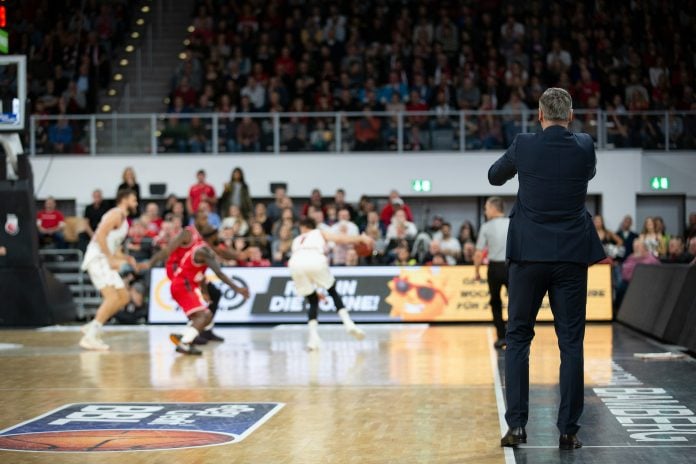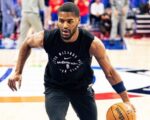As the 2025–26 NBA season begins, the league’s generational handoff feels nearly complete. The LeBron-Curry-Durant era still echoes through the arenas, but the narrative is shifting toward a new class of playmakers and two-way athletes shaping the identity of modern basketball. Among them, Dylan Harper, Jaden Ivey, Josh Giddey, and Jaden McDaniels represent four distinct prototypes of the contemporary NBA star — all still ascending, all redefining their archetypes.
At the same time, names like Victor Wembanyama, Anthony Edwards, and Deni Avdija headline a group already translating potential into production, signaling what the next half-decade of the league may look like. For analysts, fans, and bettors following player development trends, keeping track of these emerging stars — and exploring opportunities through platforms offering insights and tools such as the bet365 bonus code — provides a deeper perspective on how talent evolution aligns with team performance and individual growth metrics.
Dylan Harper: The Rookie Engine of San Antonio’s Reconstruction
The San Antonio Spurs have fully embraced their youth-centric rebuild around Victor Wembanyama, and in 2025, they might have found his backcourt counterpart in Dylan Harper, the 6’4½” guard from Rutgers. A top-two draft pick and the son of five-time NBA champion Ron Harper, Dylan brings a mature floor game that belies his age.
At Rutgers, Harper averaged 19.4 points, 4.6 rebounds, and 4.0 assists per game, while shooting 33% from three. But his true value was in his rim pressure and decision-making off penetration. With a 6’10.5″ wingspan and 213-pound frame, he plays with the physicality of a veteran guard, using his size to seal defenders and create interior passing angles uncommon for first-year players.
His combine metrics hinted at NBA-ready explosiveness: a 34-inch vertical and elite lateral speed across the ¾-court sprint. Harper’s style mirrors a blend between James Harden’s physical drives and Tyrese Haliburton’s controlled tempo — not yet efficient from deep, but already impactful through tempo control and rim creation.
Analysts project Harper as a long-term primary initiator, especially in two-man actions with Wembanyama. The Spurs, ranked bottom-five in offensive efficiency last year, will likely hand him the keys early, trusting his playmaking instincts. The long-term question will be his shooting scalability — can he evolve from a streaky perimeter threat into a consistent pull-up shooter?
If he does, Harper could redefine San Antonio’s offensive identity for the next decade.
Jaden Ivey: The Evolution from Explosive Prospect to Refined Scorer
Two years ago, Jaden Ivey was one of the fastest players in the league, often compared to Ja Morant for his first-step burst and vertical aggression. In 2025, he’s proving that athleticism alone doesn’t define his ceiling — refinement does.
Ivey’s 2024–25 averages (17.6 PPG, 4.1 RPG, 4.0 APG) tell part of the story, but the leap in efficiency is what has turned heads: shooting 36% from three and improving his free-throw percentage to the low 80s. Detroit’s spacing remains inconsistent, but Ivey’s off-ball adaptability has allowed him to coexist with Cade Cunningham, alternating between primary initiator and attacking secondary guard.
His improved handle and shot profile — more pull-ups from midrange, fewer contested drives — have made him more unpredictable. Synergy data shows Ivey scoring 1.05 points per possession in isolation, up from 0.89 the previous year, placing him in the league’s 70th percentile among guards.
Defensively, he’s becoming more committed, leveraging his athleticism for backcourt pressure rather than gambling for steals. His defensive field goal percentage allowed dropped below 45% for the first time in his career.
For Detroit, Ivey is now the face of their offensive identity — an efficient three-level scorer with a growing understanding of pacing. His style still channels Dwyane Wade’s blend of physicality and finesse, but with the spacing demands of the modern NBA, he’s evolving into a guard who can collapse defenses without over-relying on explosiveness.
Josh Giddey: The Tall Playmaker Redefining Efficiency in Chicago
The Chicago Bulls’ $100 million bet on Josh Giddey was a clear statement: the 6’8″ Australian guard is not just a connector — he’s a system unto himself. After three developmental years in Oklahoma City, Giddey has refined his shot selection and conditioning, emerging as one of the league’s most versatile playmakers.
In the 2024–25 season, Giddey averaged 12.5 points, 7.8 rebounds, and 6.4 assists, including four triple-doubles — one of which was historic: a perfect shooting triple-double in under 25 minutes, the first in NBA history. His advanced passing metrics (12.3 potential assists per game) highlight his elite vision.
What separates Giddey is his manipulation of angles. He plays at variable speeds, using his height to pass over traps and his patience to let plays mature — traits reminiscent of a young Luka Dončić but with more pure facilitation instincts.
The main evolution has been defensive: Giddey’s improved lateral mobility and positional awareness have turned him from a liability into a reliable switch defender at 1–3. The Bulls’ analytics department credits him with a net on/off impact of +6.4, largely due to his ability to generate quality shots for teammates.
His biggest challenge remains perimeter scoring. Despite improved mechanics, his 31% three-point clip limits spacing in certain lineups. Still, with Zach LaVine and Coby White as off-ball threats, Chicago’s offense is now Giddey’s to orchestrate.
Jaden McDaniels: The Timberwolves’ Silent Star
While Anthony Edwards grabs headlines in Minnesota, Jaden McDaniels quietly anchors the team’s two-way equilibrium. At 6’9″ with a 7-foot wingspan, McDaniels embodies the prototype of the modern forward — switchable, lengthy, and offensively versatile.
In 2025, he’s hitting career highs with 12.2 points, 5.7 rebounds, and 2.0 assists per game, shooting nearly 48% from the field. His offensive rating of 114.8 places him among the most efficient complementary forwards in the league. McDaniels’ growth isn’t about usage — it’s about refinement: better shot selection, more corner threes, and confident straight-line drives.
Defensively, his screen navigation and timing on contests make him one of the league’s most underrated stoppers. He often guards the opponent’s best perimeter scorer, allowing Edwards to conserve energy for offense.
McDaniels’ impact metrics support his underrated status — Minnesota’s defensive rating improves by 3.8 points per 100 possessions when he’s on the court. He’s developing into a legitimate 3-and-D plus player, with growing potential as a secondary creator.
The Wider Landscape: Wembanyama, Edwards, and Avdija Lead the Wave
Beyond these four, the broader “next generation” conversation naturally includes Victor Wembanyama, Anthony Edwards, and Deni Avdija — all under 25, all shaping the NBA’s identity for the 2030s.
Wembanyama, after a historic rookie season, remains the league’s most complete young star. His defensive rating (104) and block rate (9.7%) anchor one of the NBA’s most promising defenses. More importantly, his offensive confidence — a jump in three-point volume and handle creation — is pushing him into MVP-discussion territory by age 21.
Edwards, meanwhile, represents the alpha-scorer archetype of the era: high-usage, high-efficiency, and emotionally dominant. His 2025 All-NBA Second Team selection confirms what scouts predicted years ago — he’s not just an athletic marvel, but a leader capable of carrying playoff expectations.
And Deni Avdija, often overlooked in Washington, is finally breaking out. His improved shooting mechanics (up to 37% from three) and expanded playmaking role make him one of the most intriguing point-forwards in the league, blending European discipline with NBA-level physicality.
A Generation Without a Singular Blueprint
What defines this generation isn’t one stylistic thread — it’s adaptability. Harper’s rim pressure, Ivey’s hybrid explosiveness, Giddey’s orchestration, and McDaniels’ versatility each illustrate how player development now prioritizes positional fluidity and decision-making over raw specialization.
For analysts and coaches, the NBA’s 2025 youth landscape reflects a tactical evolution: spacing, switchability, and self-creation have become table stakes. The next question — and one that will define the next five seasons — is who among them can translate talent into dominance?
If the early signs are accurate, the answer might come from this very group.









